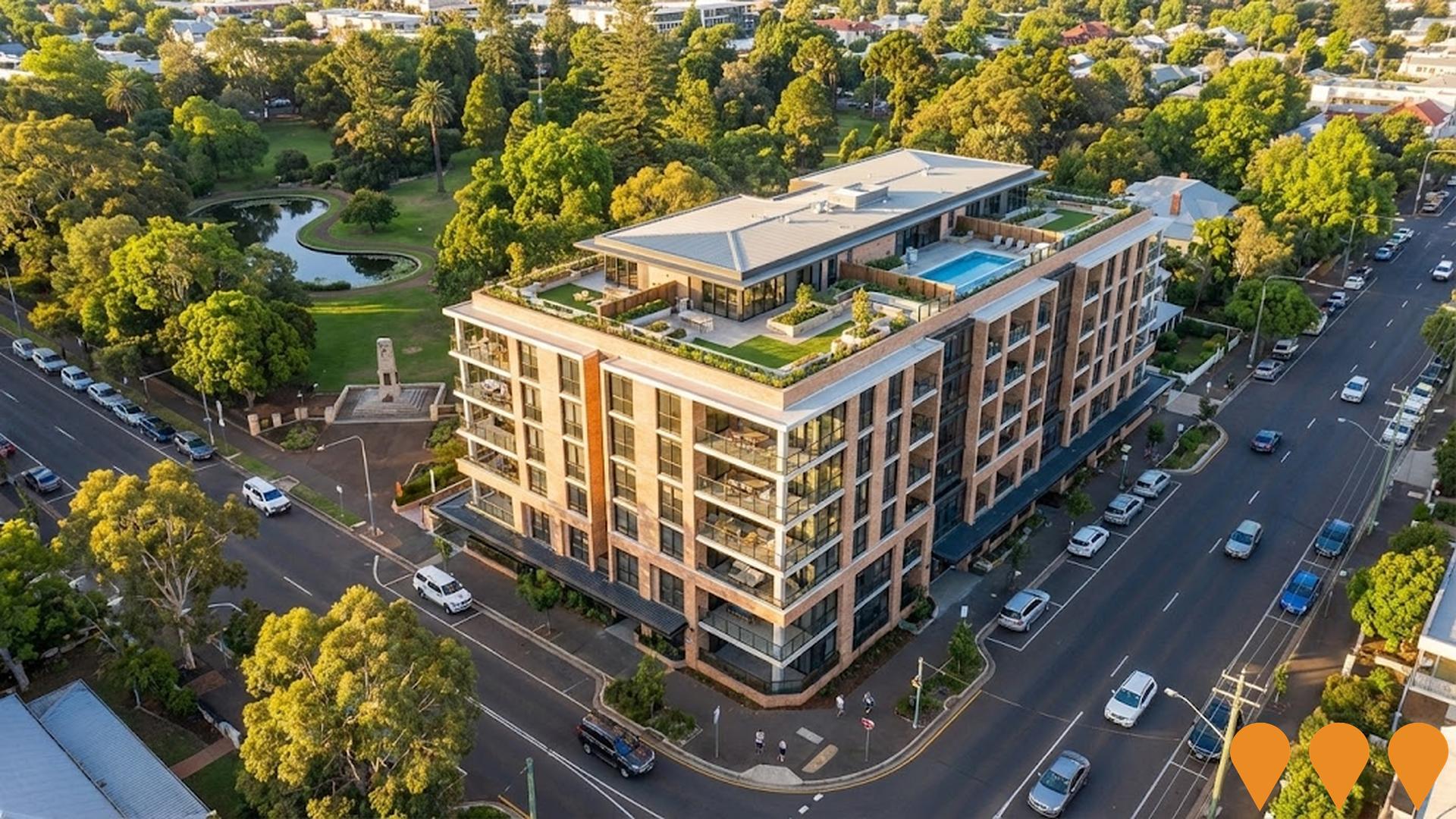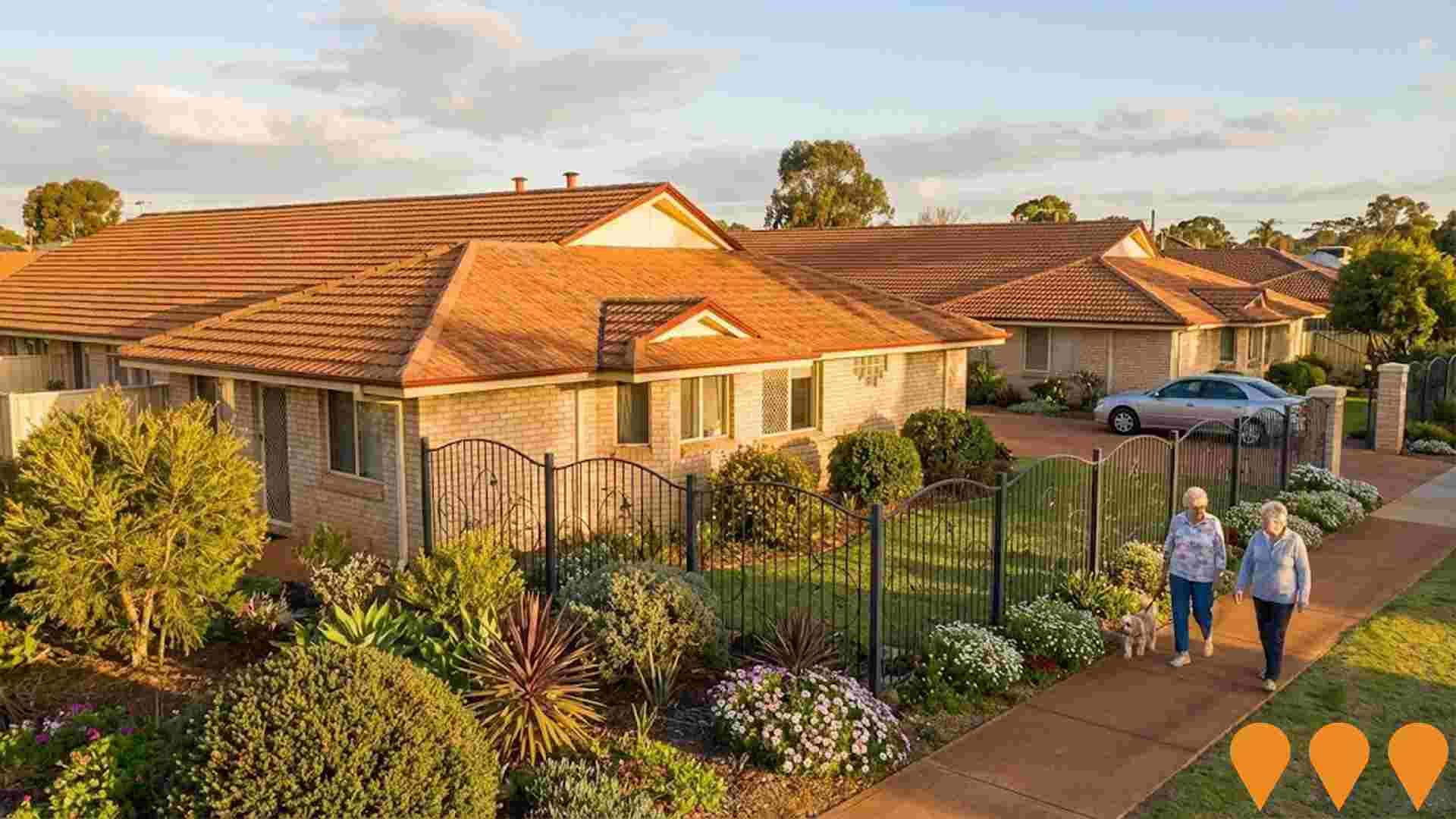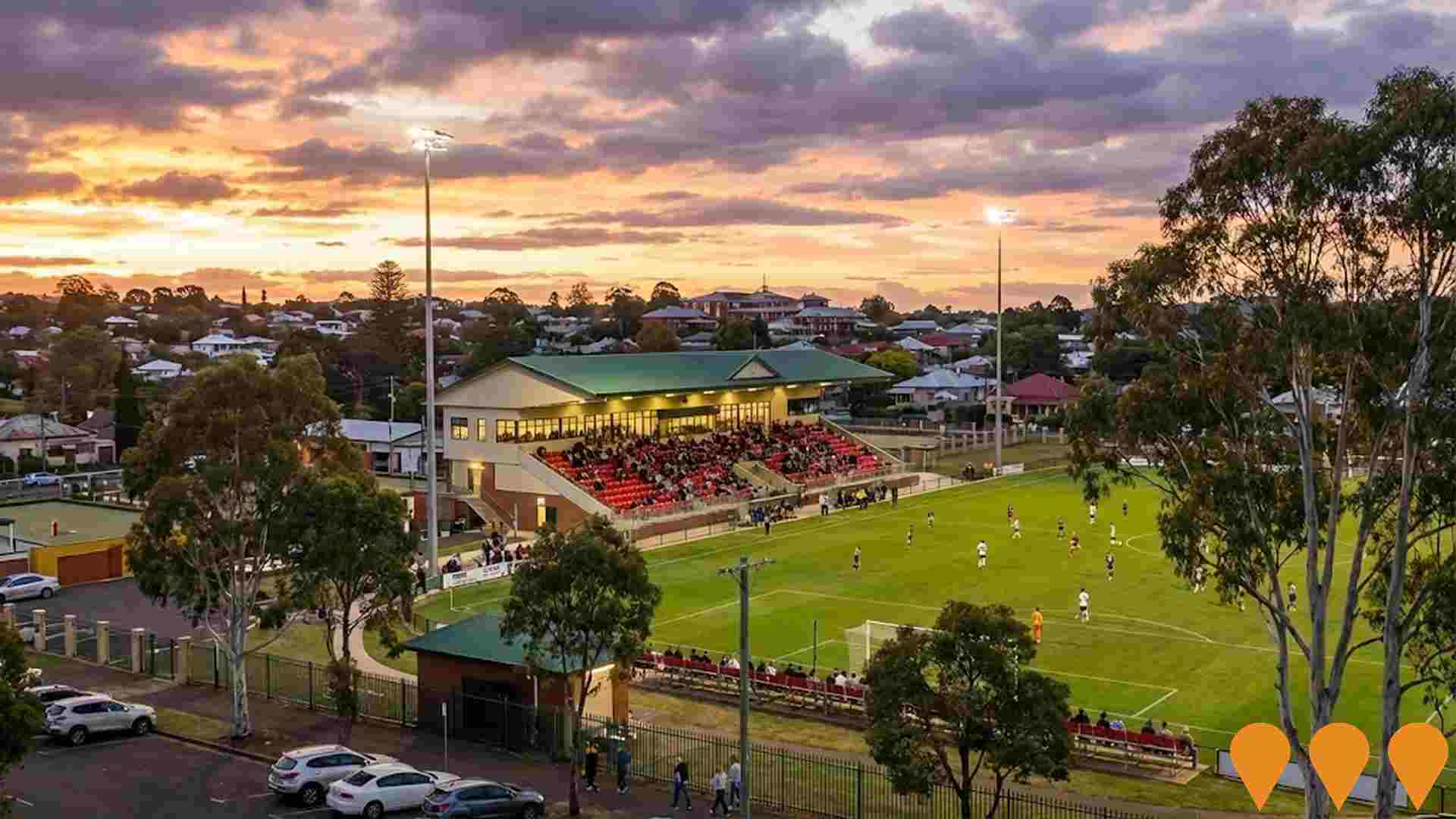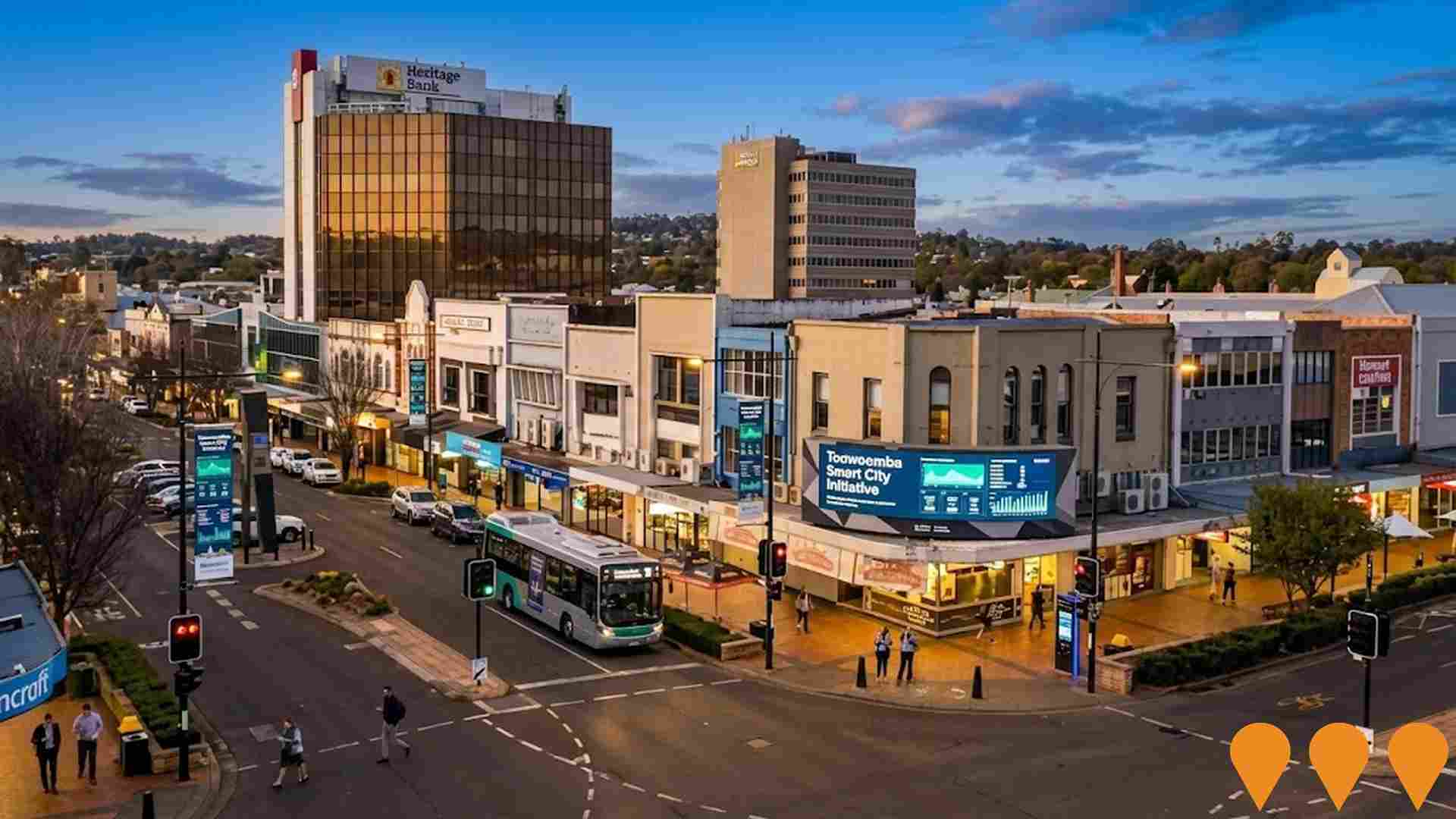Chart Color Schemes
est. as @ -- *
ABS ERP | -- people | --
2021 Census | -- people
Sales Activity
Curious about local property values? Filter the chart to assess the volume and appreciation (including resales) trends and regional comparisons, or scroll to the map below view this information at an individual property level.
Find a Recent Sale
Sales Detail
Population
An assessment of population growth drivers in Toowoomba - Central reveals an overall ranking slightly below national averages considering recent, and medium term trends
Toowoomba - Central's population was around 14,388 as of November 2025. This reflected an increase of 401 people since the 2021 Census, which reported a population of 13,987. The change was inferred from the estimated resident population of 14,369 in June 2024 and an additional 31 validated new addresses since the Census date. This level of population resulted in a density ratio of 1,511 persons per square kilometer, higher than the average seen across national locations assessed by AreaSearch. Overseas migration contributed approximately 81.3% of overall population gains during recent periods.
AreaSearch adopted ABS/Geoscience Australia projections for each SA2 area released in 2024 with a base year of 2022. For areas not covered and years post-2032, Queensland State Government's SA2 area projections released in 2023 based on 2021 data were used. These state projections did not provide age category splits, so AreaSearch applied proportional growth weightings in line with ABS Greater Capital Region projections released in 2023 based on 2022 data for each age cohort. Future population trends indicated lower quartile growth of locations outside capital cities, with the area expected to expand by 618 persons to 2041 based on latest population numbers, recording a gain of 4.2% in total over the 17 years.
Frequently Asked Questions - Population
Development
Residential development activity is lower than average in Toowoomba - Central according to AreaSearch's national comparison of local real estate markets
Toowoomba - Central has seen approximately 22 new homes approved annually. Over the past five financial years, from FY-21 to FY-25, around 110 homes were approved, with another 8 approved so far in FY-26. On average, about 1.8 new residents arrive per year for each new home approved during these years.
This balance between supply and demand contributes to stable market dynamics. The average construction cost value of new dwellings is $365,000. This financial year has seen $80.5 million in commercial development approvals recorded, indicating significant local business investment. Compared to the rest of Queensland, Toowoomba - Central has notably less development activity, with 72.0% fewer approvals per person than the regional average. This limited new supply generally supports stronger demand and higher values for established homes. New development in the area consists of approximately 37.0% detached dwellings and 63.0% townhouses or apartments. This shift from the current housing composition, which is 70.0% houses, indicates decreasing availability of developable sites and reflects changing lifestyles and the need for more affordable housing options.
The location has around 969 people per dwelling approval, demonstrating an established market. Population forecasts suggest Toowoomba - Central will gain approximately 599 residents by 2041. Current development appears well-matched to future needs, supporting steady market conditions without extreme price pressure.
Frequently Asked Questions - Development
Infrastructure
Toowoomba - Central has emerging levels of nearby infrastructure activity, ranking in the 31stth percentile nationally
Changes to local infrastructure significantly impact an area's performance. AreaSearch has identified 47 projects likely affecting the area. Notable ones include Retirement Village (86 Units) - Single Storey, Mater Dei Primary School Early Years Precinct, Ruthven Street Social and Affordable Housing Development, Fairleigh Residences (The Kitchener). The following list details those most relevant.
Professional plan users can use the search below to filter and access additional projects.
INFRASTRUCTURE SEARCH
 Denotes AI-based impression for illustrative purposes only, not to be taken as definitive under any circumstances. Please follow links and conduct other investigations from the project's source for actual imagery. Developers and project owners wishing us to use original imagery please Contact Us and we will do so.
Denotes AI-based impression for illustrative purposes only, not to be taken as definitive under any circumstances. Please follow links and conduct other investigations from the project's source for actual imagery. Developers and project owners wishing us to use original imagery please Contact Us and we will do so.
Frequently Asked Questions - Infrastructure
Toowoomba Railway Parklands Priority Development Area
The 51-hectare Toowoomba Railway Parklands Priority Development Area (PDA) is a declared PDA transforming former railway land north of Toowoomba CBD into a vibrant mixed-use urban village. It comprises six precincts delivering up to 2,270 dwellings, 43,500 m2 of commercial and retail floor space, significant new public parklands, community facilities and improved connectivity. The project is expected to generate approximately $680 million in economic benefit and support around 3,000 jobs over its 20+ year life. Development is regulated by the Toowoomba Railway Parklands PDA Development Scheme (July 2020). Development assessment is delegated to Toowoomba Regional Council.
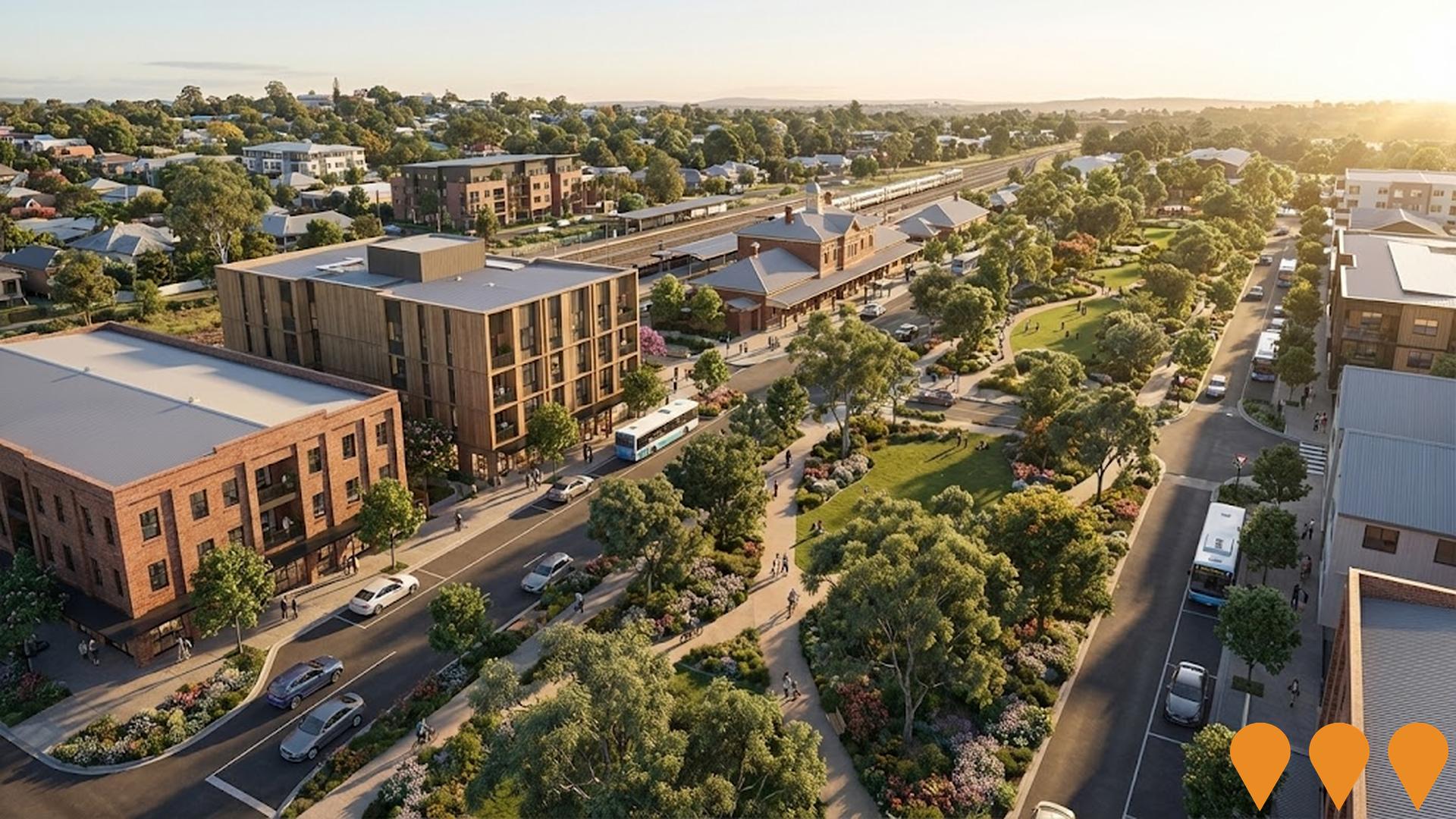
Eastville Shopping Centre
Completed food and beverage focused retail precinct anchored by national fast food and casual dining tenants serving the East Toowoomba catchment. Recent relaunch promotes the EATSville dining hub with an expanded mix of dine in and takeaway options.

Toowoomba Art Museum (proposed)
Council-led proposal to deliver a landmark art museum and cultural precinct in Toowoomba CBD to replace/upgrade the existing Toowoomba Regional Art Gallery. A 2024 Council-awarded business case is testing options, costs, site selection, governance and funding models to attract touring exhibitions and better house the City collection.

Toowoomba City Centre Master Plan - CBD Revitalisation
Ongoing city centre renewal guided by the Toowoomba City Centre Master Plan (adopted 2010, review ongoing). Works include completed streetscape upgrades such as Russell Street, heritage building improvement incentives, laneway and public art strategies, and activation of the Railway Parklands PDA. Program aims to enhance public realm, access, and economic vibrancy through to about 2031.
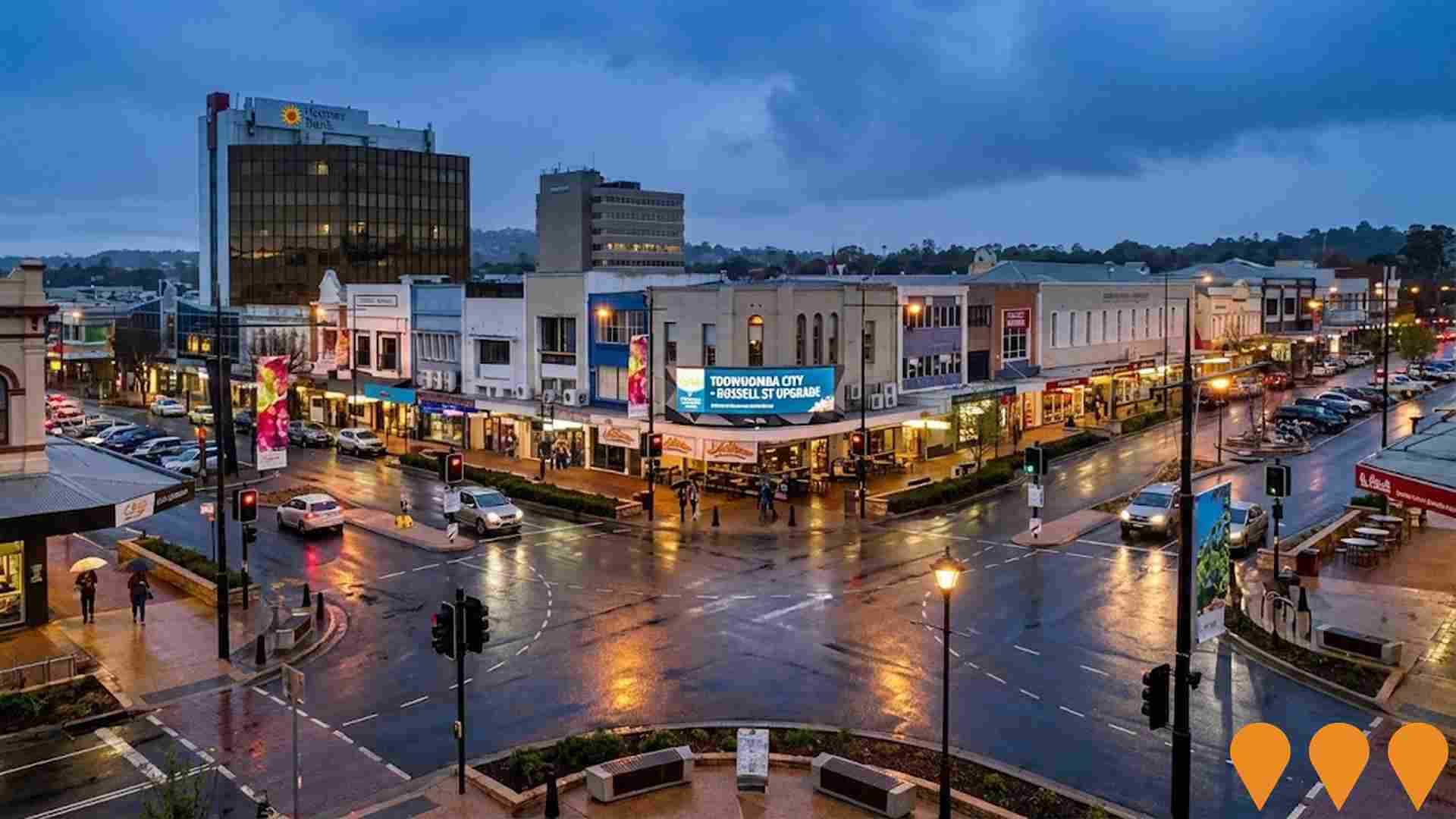
Newtown Hotel Redevelopment
Redevelopment and expansion of the historic Newtown Hotel, retaining the original two-storey building, renovating the upper floor accommodation, retaining the drive-through bottle shop, and adding expanded family and indoor dining areas, a children's play space, outside courtyard, central bar, cafe, gaming lounge, and increased on-site parking from 37 to 155 spaces. The project also incorporates the adjoining heritage-listed Newtown Towing site by replicating its front facade.
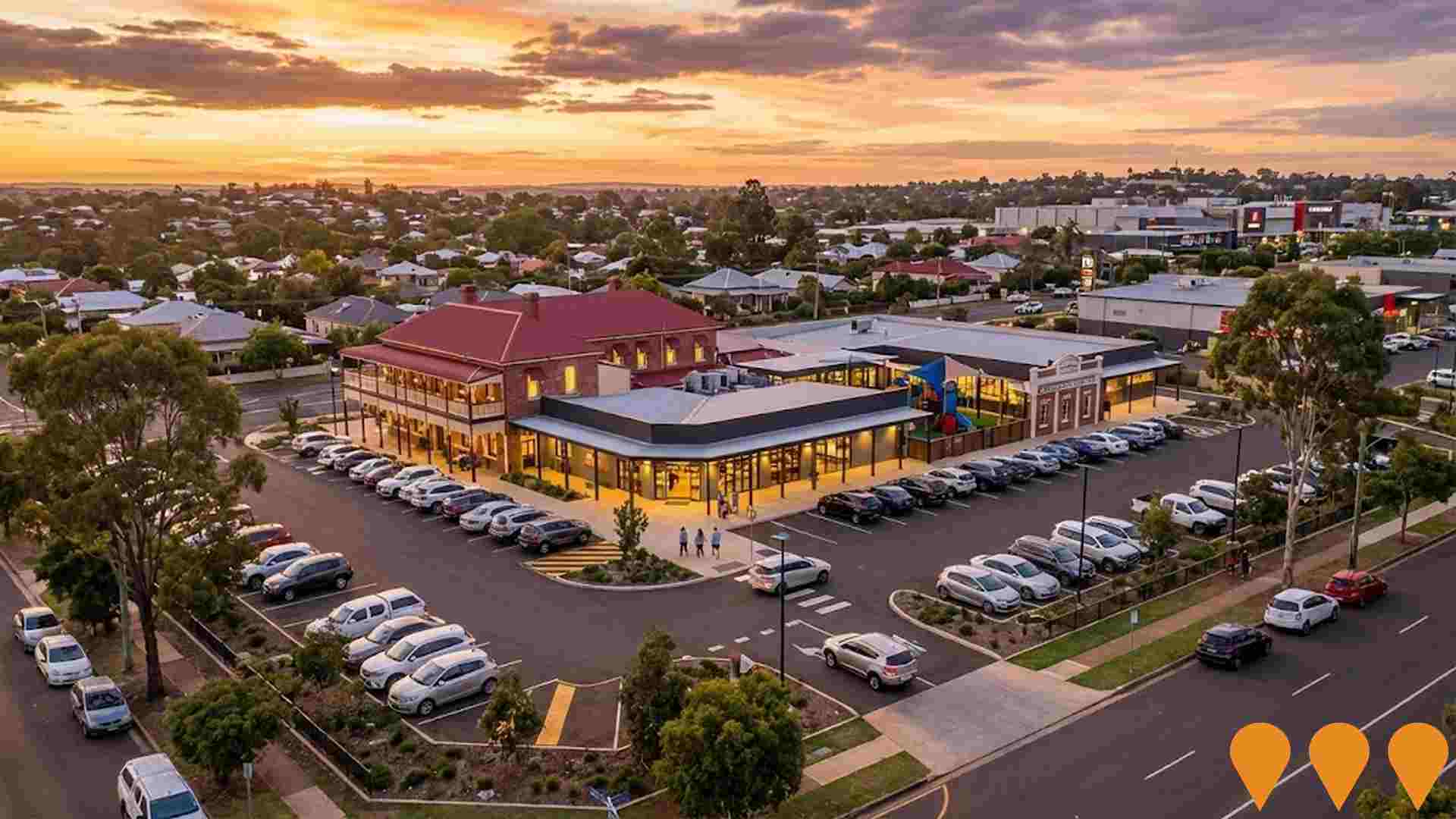
Grants for Growth Infrastructure Plan
Comprehensive infrastructure investment program supporting community facilities, roads, and public amenities across the Toowoomba region.

Mater Dei Primary School Early Years Precinct
A $50 million Early Years Precinct development by the Roman Catholic Diocese of Toowoomba for Mater Dei Primary School. This major educational infrastructure project will provide state-of-the-art facilities for early childhood education in East Toowoomba.
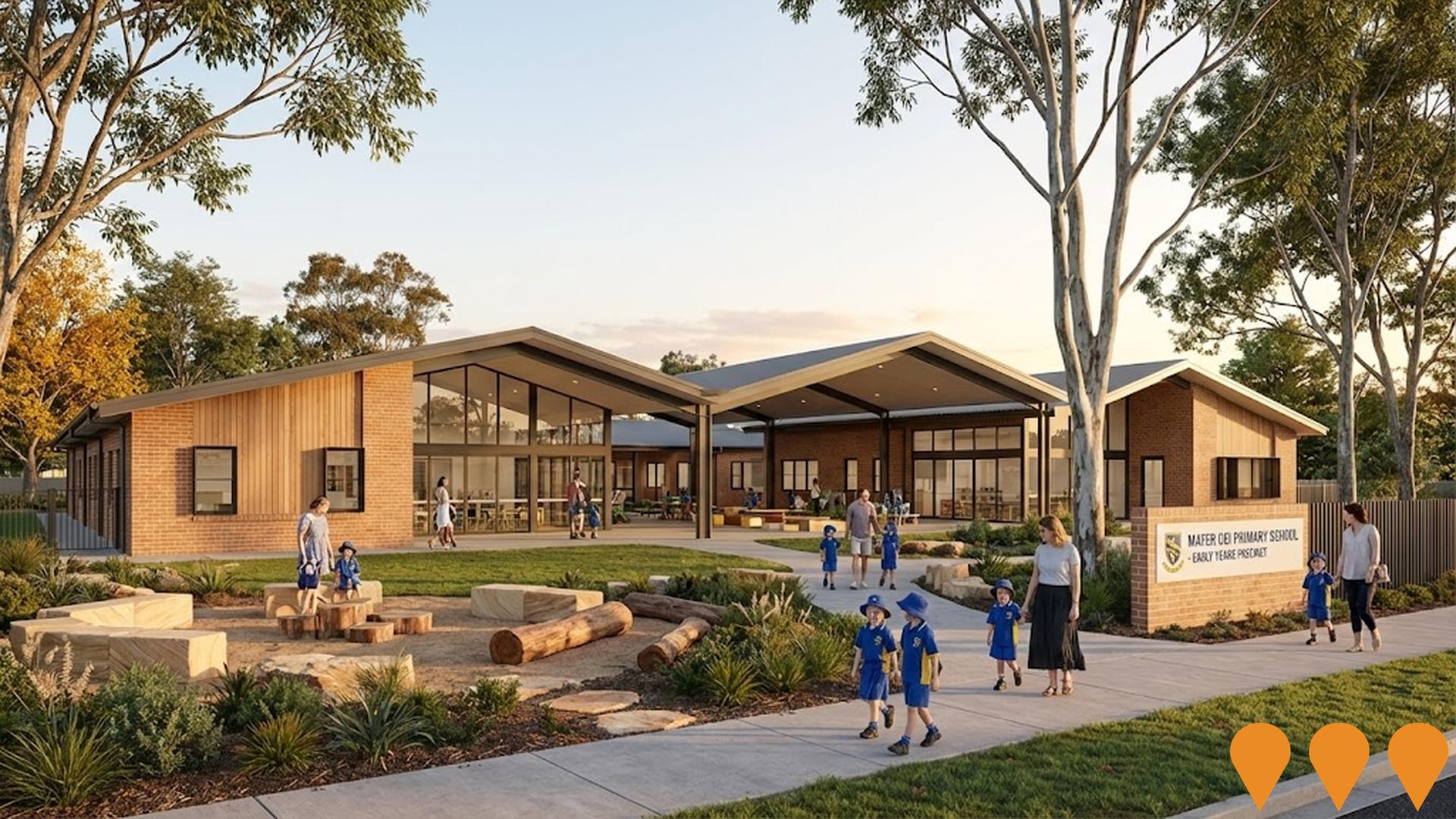
St Saviour's Primary School Stage 2B & 3
Alterations and additions to school buildings as part of the master plan, including construction of new general learning areas, multipurpose rooms, library conversion, and single-level expansions.

Employment
Employment performance in Toowoomba - Central has been broadly consistent with national averages
Toowoomba - Central has an unemployment rate of 4.3% as of June 2025, with an estimated employment growth of 15.3% over the past year. In this period, the number of residents in work increased to 7,865.
The unemployment rate is 0.4% higher than Rest of Qld's rate of 3.9%, while workforce participation remains similar at 59.1%. Employment is concentrated in health care & social assistance, education & training, and retail trade. Notably, the area has a strong specialization in health care & social assistance, with an employment share 1.4 times the regional level, but lower representation in mining at 0.9% compared to the regional average of 3.6%. The area functions as an employment hub, hosting more jobs than residents and attracting workers from surrounding areas, with a ratio of 1.5 workers per resident as of the Census.
Over the past year, employment increased by 15.3%, while labour force grew by 13.0%, causing the unemployment rate to fall by 1.9 percentage points. In contrast, Rest of Qld experienced employment growth of 1.8% and labour force growth of 2.0%, with a slight rise in unemployment rate by 0.2 percentage points. Jobs and Skills Australia's national employment forecasts from May 2025 project national employment to expand by 6.6% over five years and 13.7% over ten years, with varying growth rates across industry sectors. Applying these projections to Toowoomba - Central's employment mix suggests local growth of approximately 6.9% over five years and 14.5% over ten years.
Frequently Asked Questions - Employment
Income
Income levels sit below national averages according to AreaSearch assessment
Toowoomba - Central's median income among taxpayers in financial year 2022 was $51,743. The average income stood at $63,578 during the same period. These figures compare to Rest of Qld's median and average incomes of $50,780 and $64,844 respectively. Based on Wage Price Index growth of 13.99% since financial year 2022, current estimates for Toowoomba - Central would be approximately $58,982 (median) and $72,473 (average) as of September 2025. According to the 2021 Census, household, family, and personal incomes in Toowoomba - Central rank modestly, between the 23rd and 38th percentiles. The largest income bracket comprises 32.6% earning $1,500 - $2,999 weekly (4,690 residents), similar to the broader area where this cohort represents 31.7%. Housing affordability pressures are severe in Toowoomba - Central, with only 83.1% of income remaining, ranking at the 23rd percentile.
Frequently Asked Questions - Income
Housing
Toowoomba - Central is characterized by a predominantly suburban housing profile, with a higher proportion of rental properties than the broader region
In Toowoomba - Central, as per the latest Census evaluation, 70.4% of dwellings were houses, with the remaining 29.6% comprising semi-detached homes, apartments, and other dwelling types. This differs from Non-Metro Qld's figures, which stood at 81.4% houses and 18.6% other dwellings. Home ownership in Toowoomba - Central was recorded at 25.5%, with mortgaged dwellings at 28.0% and rented ones at 46.4%. The median monthly mortgage repayment in the area was $1,400, lower than Non-Metro Qld's average of $1,517. The median weekly rent figure for Toowoomba - Central was $295, compared to Non-Metro Qld's $310. Nationally, mortgage repayments in the area were significantly lower at $1,400 compared to Australia's average of $1,863, and rents were substantially below the national figure of $375.
Frequently Asked Questions - Housing
Household Composition
Toowoomba - Central features high concentrations of lone person households and group households, with a lower-than-average median household size
Family households constitute 58.5% of all households, including 20.4% couples with children, 23.7% couples without children, and 12.8% single parent families. Non-family households comprise the remaining 41.5%, with lone person households at 37.1% and group households making up 4.5%. The median household size is 2.2 people, which is smaller than the Rest of Qld average of 2.5.
Frequently Asked Questions - Households
Local Schools & Education
Educational attainment in Toowoomba - Central aligns closely with national averages, showing typical qualification patterns and performance metrics
The area's educational profile is notable regionally with university qualification rates at 26.7% among residents aged 15+, exceeding the Rest of Qld average of 20.6%. Bachelor degrees are most common at 18.2%, followed by postgraduate qualifications (5.4%) and graduate diplomas (3.1%). Vocational credentials are also prominent, with 35.6% of residents aged 15+ holding such qualifications – advanced diplomas account for 9.9% and certificates for 25.7%.
Educational participation is high at 30.3%, including 9.3% in primary education, 8.2% in secondary education, and 5.6% pursuing tertiary education. The area operates a network of 9 schools educating approximately 3,720 students, with typical Australian school conditions (ICSEA: 997) and balanced educational opportunities. There are 6 primary and 3 secondary schools serving distinct age groups. The area functions as an education hub with 25.9 school places per 100 residents, significantly above the regional average of 17.2, attracting students from surrounding communities. Note: where schools show 'n/a' for enrolments please refer to parent campus.
Frequently Asked Questions - Education
Schools Detail
Nearby Services & Amenities
Transport
Transport servicing is moderate compared to other areas nationally based on assessment of service frequency, route connectivity and accessibility
Toowoomba - Central has 110 active public transport stops operating within its area. These stops are served by a mix of buses along eight individual routes. The combined weekly passenger trips across these routes total 939.
Residents have excellent transport accessibility, with an average distance of 189 meters to the nearest stop. Service frequency averages 134 trips per day across all routes, equating to approximately eight weekly trips per individual stop.
Frequently Asked Questions - Transport
Transport Stops Detail
Health
Health performance in Toowoomba - Central is well below average with prevalence of common health conditions notable across both younger and older age cohorts
Health data indicates significant health challenges in Toowoomba - Central, with high prevalence of common conditions across both younger and older age groups.
Private health cover is at approximately 51% of the total population (~7,366 people), slightly lower than the average SA2 area. Mental health issues and arthritis are the most prevalent conditions, affecting 11.2% and 9.0% of residents respectively. 64.2% of residents report no medical ailments, compared to 65.3% in Rest of Qld. The area has 16.8% of residents aged 65 and over (2,414 people), lower than the 18.8% in Rest of Qld. Health outcomes among seniors present some challenges, broadly aligning with the general population's health profile.
Frequently Asked Questions - Health
Cultural Diversity
In terms of cultural diversity, Toowoomba - Central records figures broadly comparable to the national average, as found in AreaSearch's assessment of a number of language and cultural background related metrics
Toowoomba-Central, surveyed in 2016, had a cultural diversity profile roughly matching the wider region's average. Its population was predominantly Australian-born citizens, with 84.2% being citizens, 81.5% born in Australia, and 87.1% speaking English only at home. Christianity was the dominant religion, making up 53.4% of its population.
Notably, the category 'Other' was overrepresented in Toowoomba-Central compared to the rest of Queensland, comprising 3.8% versus 2.2%. In terms of ancestry, the top three groups were English (27.3%), Australian (25.0%), and Irish (10.3%). However, some ethnic groups showed notable differences in representation: German was slightly overrepresented at 7.4%, Scottish at 8.6%, and Australian Aboriginal at 3.1%.
Frequently Asked Questions - Diversity
Age
Toowoomba - Central's population is slightly younger than the national pattern
Toowoomba - Central has a median age of 36, which is lower than the Rest of Qld figure of 41 years and marginally lower than Australia's median age of 38 years. Comparing with the Rest of Qld average, the 25-34 cohort is notably over-represented at 19.1% locally, while the 65-74 year-olds are under-represented at 8.7%. Since 2021, the 25 to 34 age group has grown from 15.8% to 19.1%, while the 45 to 54 cohort has declined from 12.4% to 11.0%, and the 65 to 74 group dropped from 9.7% to 8.7%. Demographic modeling suggests that Toowoomba - Central's age profile will evolve significantly by 2041, with the 25 to 34 age cohort projected to expand by 624 people (23%), from 2,742 to 3,367. Conversely, both the 5-14 and 65-74 age groups are projected to see reduced numbers.
